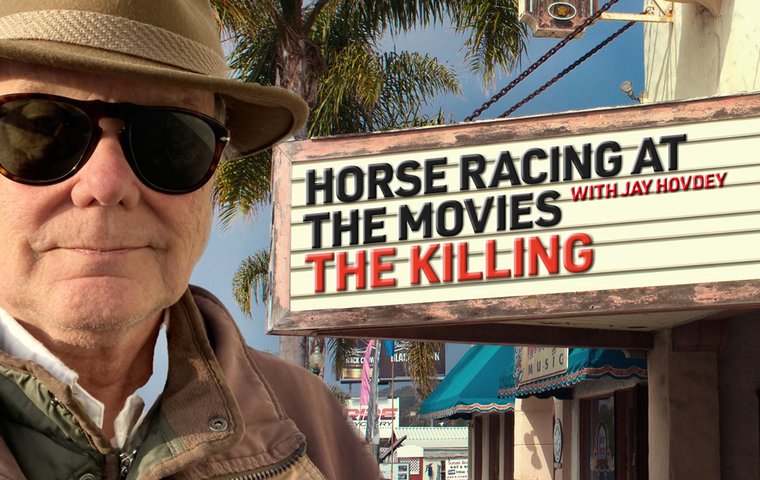
Our movie correspondent continues his popular series on racing-based films with a look a 1950s noir classic from the earliest stages of a storied career
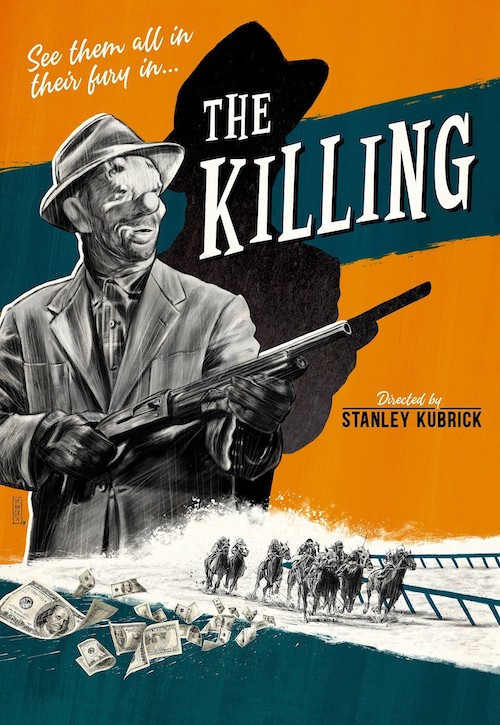 The Killing (1956)
The Killing (1956)
directed by Stanley Kubrick; starring Sterling Hayden, Marie Windsor, Elisha Cook Jr.
The Killing is beyond hard-boiled. It’s what’s left of the exploded egg in the charred pan after the stove’s been left on way too long. The cast is littered with the familiar faces of character actors who mostly answer to ‘wotsisname’.
It’s a caper film with a racetrack money room heist pulled off with clockwork precision by a collection of lowlifes and chiselers who get exactly what’s coming to them.
And that’s all this writer is going to spill, because it’s dollars to donuts there will be a bunch of movie nuts out there who maybe have heard of The Killing but never sat still and submitted to its 84 minutes of deconstructed time line accompanied by a narration delivered with the deadpan charm of yesterday’s hash.
There is good reason The Killing comes in at No. 15 on Eddie Muller’s list of the Top 25 film noirs (or is it films noir?) of all time. Muller is the man behind the Film Noir Foundation and host of the weekly Noir Alley feature on Turner Classic Movies cable channel.
But don’t take Eddie’s word for it. As recently as June of 2022, Graeme Ross of the Independent ranked The Killing at No. 10 on his list of the 20 greatest film noir classics. Classic, I guess, meaning black and white.
Anyway, color film stock cost money in those days and money is not what the filmmakers had much of. The budget was $330,000, covering soup to nuts, with $200,000 put up by United Artists and the rest raised by first-time producer James B. Harris, who for some reason had nothing but faith in the talents of a young New York director he’d met through mutual friend Alexander Singer. His name was Stanley Kubrick.
Critical buzz
Yes, that Stanley Kubrick, just 27 at the time, who might have gone on to make Dr. Strangelove, 2001: A Space Odyssey and The Shining without the critical buzz generated by The Killing.
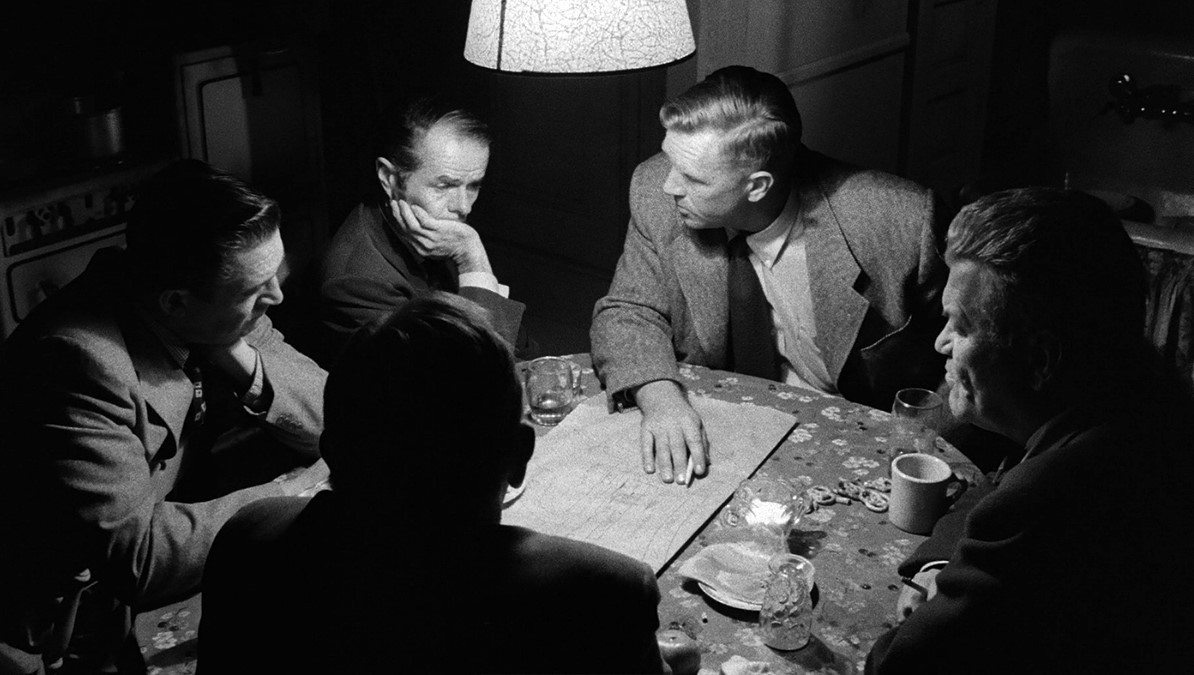 Then again, maybe not. For his part, Kubrick always gave his little racetrack-heist flick full credit for getting him started with the name-brand studios that sustained the rest of his iconoclastic career.
Then again, maybe not. For his part, Kubrick always gave his little racetrack-heist flick full credit for getting him started with the name-brand studios that sustained the rest of his iconoclastic career.
All that is beside the point. Kubrick could have stopped at The Killing and returned to taking photos for National Geographic, and still horse racing cinemaniacs would be left for all time with a polished gem in a poisonous setting.
For the money, the filmmakers got Sterling Hayden as their lead. At 6-5 and fair, Sterling was a studio pretty boy early in a career that was interrupted by military service (he was in the OSS) and seafaring adventures (with a rating of Sailing Master).
As ex-con Johnny Clay, he is the brains behind the caper, although in one piece of foreshadowing, a key recruit looks at him fondly and says, “Oh, Johnny my friend, you never were very bright, but I love you anyway.”
To that point, Sterling’s best roles included the title character in Johnny Guitar, with Joan Crawford, and The Asphalt Jungle, from 1950, in which he played a guy who could have been Johnny Clay’s cellmate. The others in Clay’s gang include the growling Ted di Corsia, apologetic J.C. Flippen, Tim Carey and his freaky clenched teeth, and a meaty role for everyone’s favorite film weasel, Elisha Cook Jr.
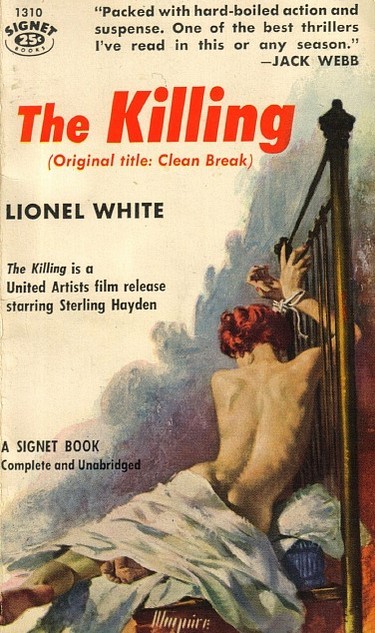 Slimeball with smooth patter and a shotgun
Slimeball with smooth patter and a shotgun
Marie Windsor, whose earlier films would need to improve to be called ‘B pictures’, is a grasping femme fatale as transparent as her lounge wear, and Vince Edwards pops in and out as a slimeball with smooth patter and a shotgun. Later, Edwards became the noble Dr. Ben Casey on the TV show, when he wasn’t spending afternoons at the windows of Santa Anita and Hollywood Park.
In a 2011 interview for the Criterion film site, Harris takes credit for steering Kubrick toward Jim Thompson to work on the screenplay based on the book Clean Break, by Lionel White.
Thompson was known for spewing a nasty, hopeless vision of society’s underbelly in paperbacks like The Killer Inside Me, The Grifters and Pop. 1280. Compared to Thompson, Chandler and Hammett wrote cookbooks. The Killing was his kind of canvas.
“I know you like a book,” Clay tells Windsor’s schemer. “You’re a no good, nosy little tramp. You’d sell out your own mother for a piece of fudge, but you’re smart along with it. Smart enough to know when to sell and when to sit tight.”
With script and cast in tow, Kubrick and Harris were off to the races, sort of.
“We came to California because we couldn’t get any cooperation from any New York tracks, because we were doing a story about the robbery of a racetrack,” Harris said in the interview. “That is a no-no as far as cooperation from tracks. We did find out that a track in San Francisco would cooperate.”
That track was Bay Meadows, located in the town of San Mateo just south of San Francisco. (Sharpies in the crowd will notice there’s no turf course, which was not installed until 1978.)
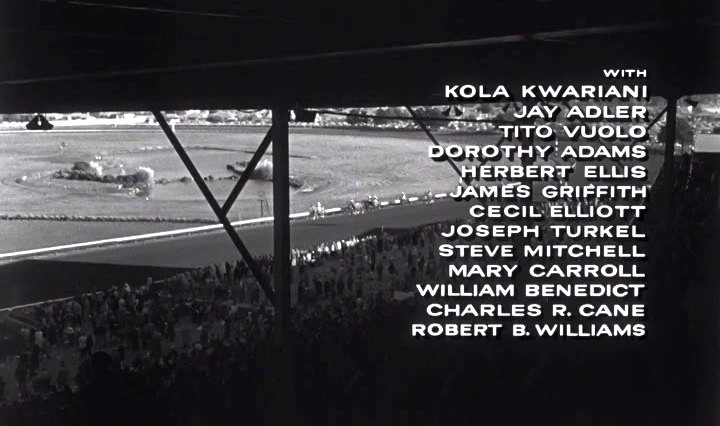 Seabiscuit himself went 4-for-4 at Bay Meadows, including one win under 133 pounds; Johnny Longden, Bill Shoemaker and Ralph Neves were regulars in the jockeys’ room.
Seabiscuit himself went 4-for-4 at Bay Meadows, including one win under 133 pounds; Johnny Longden, Bill Shoemaker and Ralph Neves were regulars in the jockeys’ room.
“When we got to California, we had a whole group of cameramen go up there specifically assigned to get us footage of horse races,” Harris said.
“When Stanley screened the footage, he was very disappointed. Particularly the footage we needed for the main titles. Since Alex Singer had introduced me to Stanley, we thought it wise to include Alex in our little group of filmmakers. We sent him up to the track on his own. Alex got us all the shots we needed for the film.”
The shoot took 24 days – between the Bay Area and LA locations – after which Kubrick and Harris cut the film to the rhythm of White’s story as adapted by Thompson and Kubrick. A sneak preview for Hollywood insiders did not go over very well, as Harris vividly recalls.
“The agent for Sterling Hayden came out of the screening and said, ‘Well, you guys really ruined it for my client,’” Harris said.
Death sentence
The partners tried recutting the film to satisfy more conventional tastes, but soon abandoned that idea and deli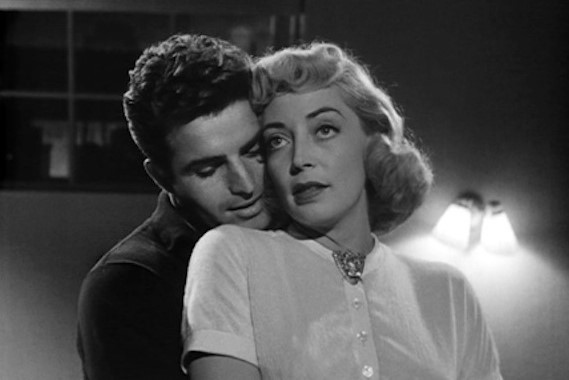 vered the movie they’d always had in mind. According to Harris, United Artists diddled around with an opening date, then shoved it into a major Manhattan theatre at the last minute to replace a studio flop on May 19, 1956, For a dark, low-budget drama from an unknown director, it was a death sentence.
vered the movie they’d always had in mind. According to Harris, United Artists diddled around with an opening date, then shoved it into a major Manhattan theatre at the last minute to replace a studio flop on May 19, 1956, For a dark, low-budget drama from an unknown director, it was a death sentence.
“The film opened and closed so fast it created a suction,” Harris said. “They had to put speed bumps in the aisles to keep the people from walking out too fast. The only thing was, it got terrific reviews. Was it a success? Not at the box office. But the picture got us a lot of heat for our careers.”
The Harris-Kubrick partnership stayed hot through Paths of Glory and Lolita, after which Harris turned to directing The Bedford Incident with Sidney Poitier, Telefon with Charles Bronson, and Cop with James Woods. In the meantime, Kubrick went on to filmmaking immortality, born of a chance meeting with a kindred spirit and a potboiler based on a racetrack heist.
“I remember sitting with Stanley at the automat down in Times Square, trying to think of an effective ending,” Harris said. “In the book, the Sterling Hayden character was actually killed in the end. A real film noir type of thing. But I thought … ”
Nope. Not gonna go there. If you’ve seen it, the ending is indelible.
• For those new to The Killing, there is a good version at Internet Archive for nothing (https://archive.org/details/thekilling1956), which is about what most of the characters in the movie are good for.
• View all Jay Hovdey’s features in his Favorite Racehorses series
Horse racing at the movies: The Black Stallion is a bonafide classic among the greatest horse fables
Horse racing at the movies: Casey’s Shadow gets into the details like few feature films
Horse racing at the movies: Champions was different from the maudlin crowd
View the latest TRC Global Rankings for horses / jockeys / trainers / sires


